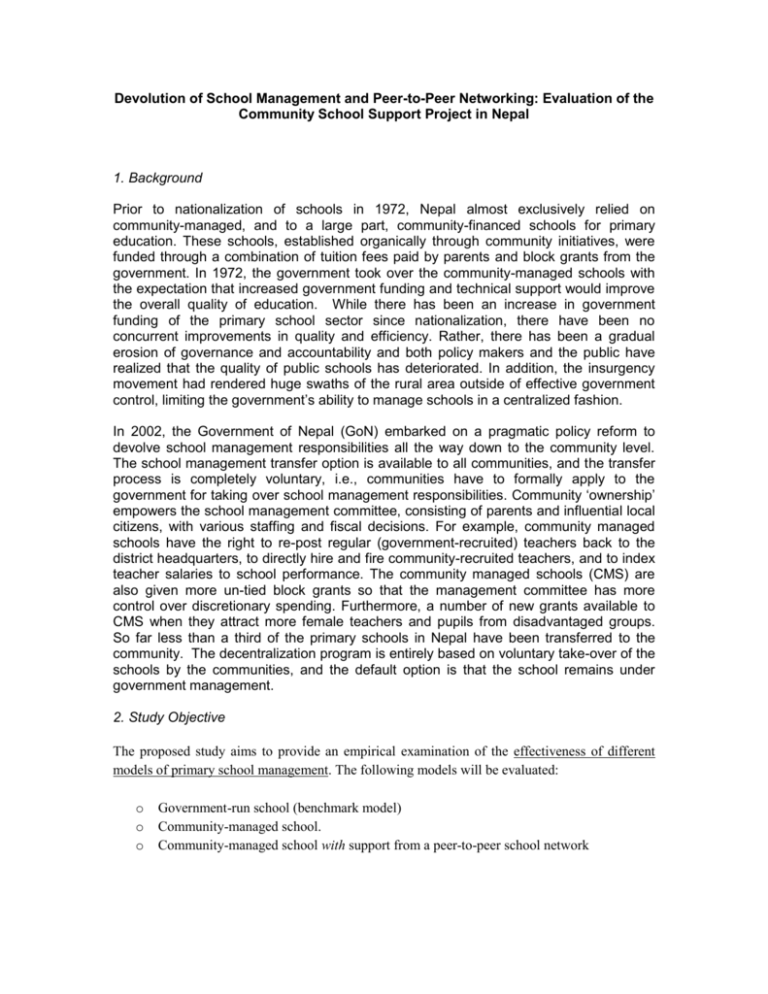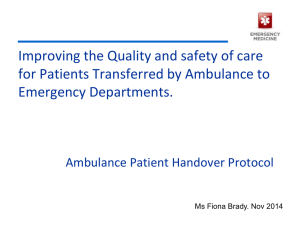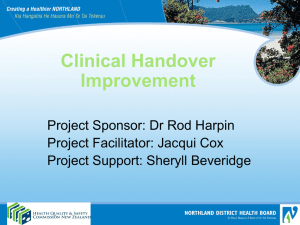Evaluation of the Community School Support Project in Nepal
advertisement

Devolution of School Management and Peer-to-Peer Networking: Evaluation of the Community School Support Project in Nepal 1. Background Prior to nationalization of schools in 1972, Nepal almost exclusively relied on community-managed, and to a large part, community-financed schools for primary education. These schools, established organically through community initiatives, were funded through a combination of tuition fees paid by parents and block grants from the government. In 1972, the government took over the community-managed schools with the expectation that increased government funding and technical support would improve the overall quality of education. While there has been an increase in government funding of the primary school sector since nationalization, there have been no concurrent improvements in quality and efficiency. Rather, there has been a gradual erosion of governance and accountability and both policy makers and the public have realized that the quality of public schools has deteriorated. In addition, the insurgency movement had rendered huge swaths of the rural area outside of effective government control, limiting the government’s ability to manage schools in a centralized fashion. In 2002, the Government of Nepal (GoN) embarked on a pragmatic policy reform to devolve school management responsibilities all the way down to the community level. The school management transfer option is available to all communities, and the transfer process is completely voluntary, i.e., communities have to formally apply to the government for taking over school management responsibilities. Community ‘ownership’ empowers the school management committee, consisting of parents and influential local citizens, with various staffing and fiscal decisions. For example, community managed schools have the right to re-post regular (government-recruited) teachers back to the district headquarters, to directly hire and fire community-recruited teachers, and to index teacher salaries to school performance. The community managed schools (CMS) are also given more un-tied block grants so that the management committee has more control over discretionary spending. Furthermore, a number of new grants available to CMS when they attract more female teachers and pupils from disadvantaged groups. So far less than a third of the primary schools in Nepal have been transferred to the community. The decentralization program is entirely based on voluntary take-over of the schools by the communities, and the default option is that the school remains under government management. 2. Study Objective The proposed study aims to provide an empirical examination of the effectiveness of different models of primary school management. The following models will be evaluated: o o o Government-run school (benchmark model) Community-managed school. Community-managed school with support from a peer-to-peer school network The study aims to evaluate the impact of these school management arrangements on the following final outcomes: o Learning outcomes: National curriculum-based learning outcomes for a randomly chosen sample of children in the catchment area of the school, including both in-school and out-of-school children; Internationally comparable TIMMS-type educational achievement among a cohort of children (grade 4 students) o Educational achievement/School Efficiency (e.g., enrollment profile by socioeconomic background, dropout rates) o Transition to secondary school: the percentage of children in the primary school’s catchment area who continue to secondary school The following intermediate outcomes will be collected as a way of assessing the channels through which the three interventions affect educational outcomes: o Access: enrollment rates o Equity: enrollment and retention rates by socio-economic status, disadvantaged group status/ caste, gender o School efficiency: retention rates and repetition rates o Teacher choice and quality: appointment of lower-caste teachers and teachers from disadvantaged communities, teacher subject matter competency (through a teacher test) o Teacher Absenteeism rates o Learning environment: School equipment presence of learning materials o Regularity of classes o Adequacy of the number of teachers, pupil-teacher ratios o Non-salary recurrent costs: expenditure allocation over inputs, o Transparency mechanisms and community participation To be able to measure precisely the impact of the interventions, those indicators will be measured both at baseline (before the implementation of the interventions) and during several rounds of follow-up surveys. 3. Evaluation Design Since devolution of school management to the communities is voluntary, none of the schools participating in the study will be forced to accept hand-over to the community. In addition, no school will be required to involuntarily stay under government management. To be able to evaluate the different impact of school management systems, one would need an “exogenous” source of variation in school management systems, i.e. a source of variation that does not depend on community characteristics. In order to induce this exogenous variation in the school models, the project proposes to randomly choose a subset of communities/schools in the evaluation sample which will be encouraged to take over their school. This will be achieved through advocacy campaign outreach from a network of NGOs including the Community School National Network (CSNN), the Nepali network of school management committees. Representatives of this Network, together with delegates from District Education Offices, will visit, inform and encourage a randomly chosen set of communities to request handover of their school and help them prepare an application for the hand-over. This encouragement will serve as a predictor of whether a school chooses to request handover. Since the encouraged communities will be randomly chosen, the variation in school management systems that will be generated by this encouragement campaign will not depend on the communities characteristics, and hence it is exogenous. Since the communities voluntarily choose whether to request handover of their schools, there will be no one-to-one link between the schools that have been chosen to receive the “incentive” to request handover and the schools that actually request handover: some schools that receive the incentive might not request handover, while some schools that do not receive the incentive might still choose to request the handover. In econometric terms, the random allocation to either of the incentive groups will serve as an instrumental variable for the choice of handover to the schools for the Intent-to-Treat estimation. Peer-to-peer school networks to facilitate exchange and learning about different types of management experiences, is meant to be a form of additional support after devolution. This will include exchange tours between peer-schools, visits by representatives of the Network body, support for attending workshops, and internal distribution of the Network newsletter. These activities will be facilitated by CSNN. The effectiveness of a peer-topeer network will be evaluated by comparing a set of community-managed schools that will be randomly assigned to receive network support to a set of community-managed schools outside the grid. 4. Evaluation Activities Conducted So Far Given that we did not have any prior information to base our prediction on the efficacy of the inducement intervention on the take up rate, we first conducted a small pilot: Pilot in 80 schools and their communities from six districts in the country Two-stage stratified random sampling 40 randomly “treated” with NGO advocacy Pilot Baseline survey fielded in December 2005- February 2006 Advocacy conducted in June-September 2006 Pilot Follow-up/Full Baseline August – November 2007 Fifteen out of the 40 intent-to-treat communities took up the school transfer option. Lessons learnt by CSNN during the encouragement drive, led us to predict that the takeup rate during the full-scale evaluation would be around 50%. The baseline survey (a follow-up survey of the pilot sample was also conducted) comprised of: 220 Schools/Communities in 16 districts picked randomly across the country August 2007-November 2007 launch of baseline survey Household/Child Census: 29,241 Child Achievement Tests: 6,769 (Anthropometric data collected) Teacher Competency Tests: 801 Grade 5 TIMSS-type Tests: 4,104 5. Additional SIEF-funded Evaluation Arm There are four types of direct costs associated with these impact evaluation activities: a) incentive grants to community transferred schools, b) NGO advocacy to generate demand for transfer community management option, c) peer-to-peer networking, and d) school and household surveys. Incentive grants to schools are paid by GoN with IDAfinancing. The advocacy and household/school survey costs are covered though IDAexecuted TFs (e.g., EPDF). The funding from SIEF would cover the costs associated with the additional intervention arm, namely, peer-to-peer networking and the additional sample of 100 school communities surveys (at baseline and follow-up round). Budget estimate for this additional impact evaluation is US$ 200,000. These are based on the unit cost of about $700 per survey round per school community (150 households to be covered in one community), and $600 unit cost per school community on peer-to-peer networking intervention. Total Evaluation Budget $500,000 Current EPDF Additional SIEF $300,000 200,000 6. Research Team Principle Investigators: Nazmul Chaudhury (SASHD), Dilip Parajuli (SASHD)







